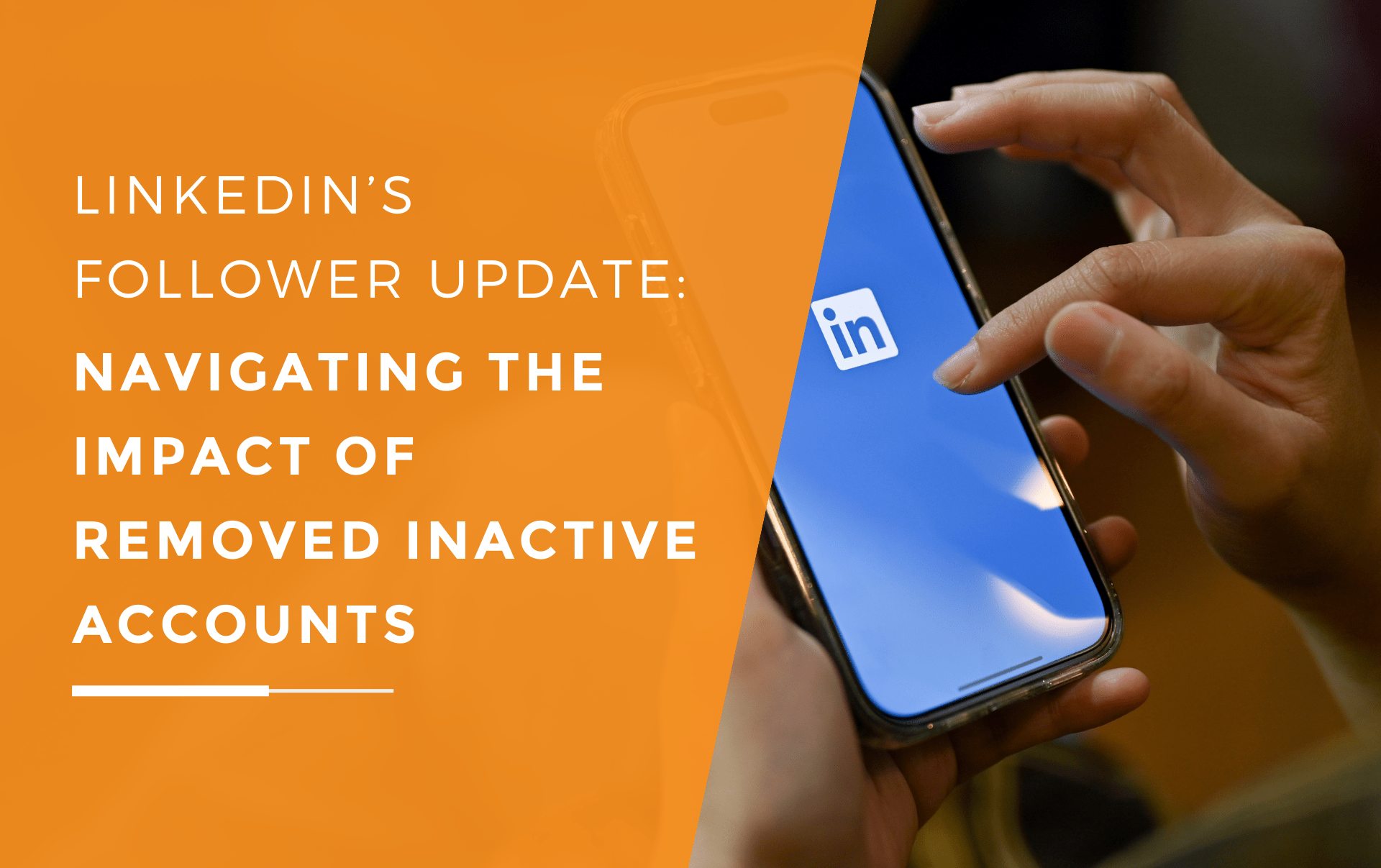LinkedIn is a powerful tool for networking, job searching, and professional branding. However, not all accounts are created equal. Some users may find themselves wondering about the implications of having an inactive account. In this post, we will dive into LinkedIn's policy regarding inactive accounts and what it means for users. Understanding these rules can help you maintain a solid professional presence and avoid any unexpected surprises down the line.
What Constitutes an Inactive Account on LinkedIn?

So, what exactly is considered an "inactive" account on LinkedIn? The platform defines inactivity in a few different ways, and understanding these can help you stay in good standing. Here’s a breakdown:
- Login Frequency: If you haven't logged into your account for an extended period, typically more than 6 months, LinkedIn may deem your account inactive.
- Profile Updates: Not updating your profile—whether that means adding new skills, changing your job title, or refreshing your profile picture—can lead to inactivity status. LinkedIn values fresh content.
- Engagement Levels: If you aren’t engaging with other users’ posts, sharing insights, or commenting, your account may be labeled as inactive. Regular interaction signals that you are active in the professional community.
- Network Growth: Failing to connect with new contacts or maintain your existing ones can also contribute to an account being inactive. LinkedIn thrives on networking!
In light of the above factors, it’s crucial to regularly log in, network, and keep your profile updated. If you have an account that's gone dormant, now might be the perfect time to dust it off and reestablish your professional presence!
LinkedIn's Guidelines on Dormant Profiles
LinkedIn understands that life can get busy, and sometimes users might not log into their accounts for a while. However, they do have specific guidelines regarding dormant or inactive profiles to maintain the platform's integrity and usefulness. So, what exactly does that entail?
Here are some key points about LinkedIn's policies on dormant profiles:
- Inactivity Duration: LinkedIn defines an “inactive account” as one that hasn’t been logged into for a certain period, typically six months or more. If you find yourself in this category, it’s a good idea to log in or check your account periodically.
- Account Visibility: If your profile is tagged as inactive, it may be less visible to recruiters and connections. This could harm your chances of networking and job searching opportunities.
- Account Deactivation: While LinkedIn may not immediately delete your account due to inactivity, prolonged dormancy can lead to eventual deactivation. If your account is inactive for an extended duration, it may be removed altogether.
- Notifications: LinkedIn typically sends reminders to users who've been inactive for a significant amount of time, encouraging them to engage with the platform. Ignoring these alerts can lead to more severe consequences.
To avoid falling prey to these guidelines, staying active and routinely engaging with your network is a smart strategy. Updating your profile, commenting on posts, or even just logging in occasionally can keep your profile in good standing!
Consequences of Inactivity on LinkedIn
If you’ve been silent on LinkedIn for a while, the consequences can be more serious than you might think. Awareness of these repercussions is crucial for anyone wanting to maintain a professional online presence.
Here are some potential consequences of having an inactive LinkedIn account:
- Loss of Networking Opportunities: If your profile isn’t active, it’s easily forgotten by connections. This means fewer opportunities to connect with industry professionals, recruiters, and potential employers.
- Decline in Profile Strength: LinkedIn uses an algorithm to assess your profile strength based on your activity level. An inactive account can lead to a decline in your profile’s strength metrics, affecting how you appear in searches.
- Risk of Account Deletion: If your account is inactive for a long enough period, there’s a real risk it may be deleted. This means losing all connections, endorsements, and even your professional history accumulated over the years.
- Misinformation Regarding Your Availability: Recruiters and connections often assume an inactive account equates to an unavailability for job offers or professional collaborations. This misconception can leave you out of the loop.
Considering these consequences, it's wise to prioritize your LinkedIn presence. Even small interactions can make a big difference in retaining your network and profile viability!
How to Keep Your LinkedIn Profile Active
Keeping your LinkedIn profile active is vital for maintaining connections, expanding your professional network, and showcasing your skills. Here are some handy tips to ensure you stay active on the platform:
- Regularly Update Your Profile: Aim to refresh your profile every few months. When you gain a new skill, change jobs, or complete a significant project, be sure to update your experience and skills sections.
- Engage with Content: Interact with posts and articles by liking, commenting, or sharing. This shows you're still active and interested in your network.
- Post Updates: Share your thoughts on industry news or accomplishments—whether big or small. Posting regularly keeps your connections informed and engaged.
- Expand Your Network: Actively seek connections by sending personalized connection requests. It's a great way to meet industry peers and keep your profile relevant.
- Participate in Groups: Join LinkedIn groups relevant to your industry or interests. Engaging with group discussions can greatly boost your visibility.
- Attend LinkedIn Events: Participating in webinars and virtual events not only helps your professional development but also keeps you connected with like-minded individuals.
- Update Your Profile Picture: Having a current and professional-looking profile picture makes your profile more approachable and engaging.
By implementing these strategies, you can keep your LinkedIn presence vibrant and ensure you’re not just another inactive account!
Recovering an Inactive LinkedIn Account
If you find yourself with an inactive LinkedIn account, don’t worry! Recovering it is entirely possible, and here’s how you can do it:
- Visit LinkedIn’s Login Page: Go to the LinkedIn login page and enter your email address or phone number associated with the account.
- Use "Forgot Password": If you can’t remember your password or can’t log in, click on the “Forgot password?” link. LinkedIn will send you an email with instructions to reset it.
- Check Your Email: Once you receive the email, follow the provided link to reset your password. Ensure your new password is strong and memorable.
- Verify Your Identity: Sometimes, LinkedIn might require you to confirm your identity through a verification code sent to your registered email or phone.
- Reactivate Your Account: If your account was deactivated, you can reactivate it by logging in. LinkedIn may send you a confirmation email.
- Reach Out to Customer Support: If your account remains inaccessible, reaching out to LinkedIn’s customer support can help. They can assist with identity verification or technical difficulties.
Once you regain access, be sure to follow the tips mentioned earlier to keep your account active. Remember, an engaged LinkedIn profile can open doors to countless professional opportunities!
Understanding LinkedIn's Policy on Inactive Accounts
LinkedIn, the premier platform for professional networking, has specific guidelines concerning inactive accounts. This policy aims to maintain the integrity of the platform and ensure that users can connect authentically. An account is considered inactive if it has not been logged into or engaged with for a prolonged period, typically six months.
Here are key points regarding LinkedIn's policy on inactive accounts:
- Definition of Inactivity: A user account becomes inactive after six months of no login activity.
- Consequences of Inactivity: Inactive accounts may be subject to deletion, which means that the user will lose all connections, endorsements, and personal data.
- Notifications: LinkedIn may send reminders via email to users with inactive accounts, encouraging them to log in and re-engage with the platform.
- Reactivation: If an account has been marked as inactive but not deleted, users can easily reactivate it by logging in, and their previous connections and content will remain intact.
- Data Retention: LinkedIn retains user data for a specified time even after account deletion, in compliance with privacy regulations.
It is essential for users to understand these policies to maintain their network and protect their personal data. Regularly engaging with the platform not only secures your account but also enhances your professional presence online.
| Action | Time Frame | Outcome |
|---|---|---|
| Login | Every 6 months | Account remains active |
| No login | 6 months | Account becomes inactive |
| Reactivate | Within 30 days of notification | Account is restored |
In conclusion, understanding LinkedIn's policy on inactive accounts is crucial for users to retain their professional ties and data. Regular engagement with the platform is the best strategy to avoid any issues related to account inactivity.
 admin
admin








